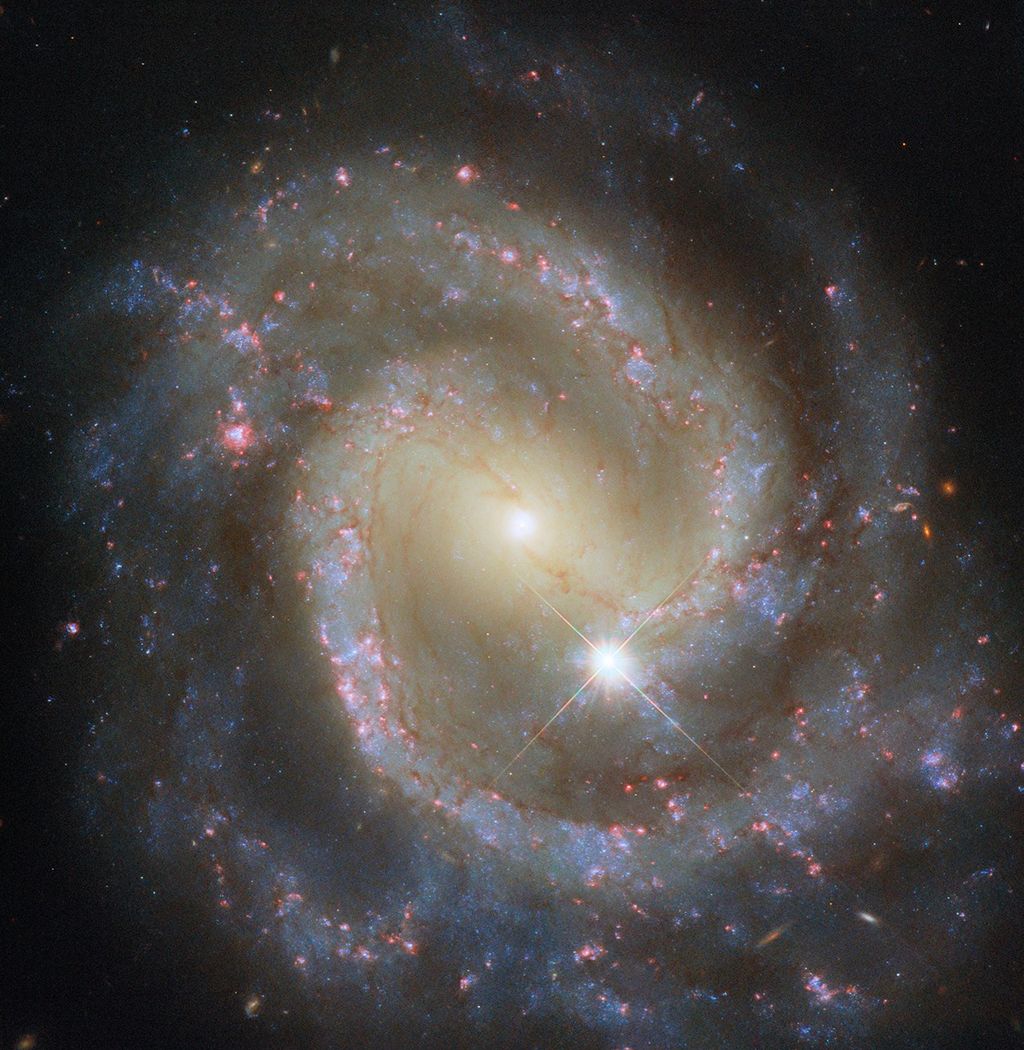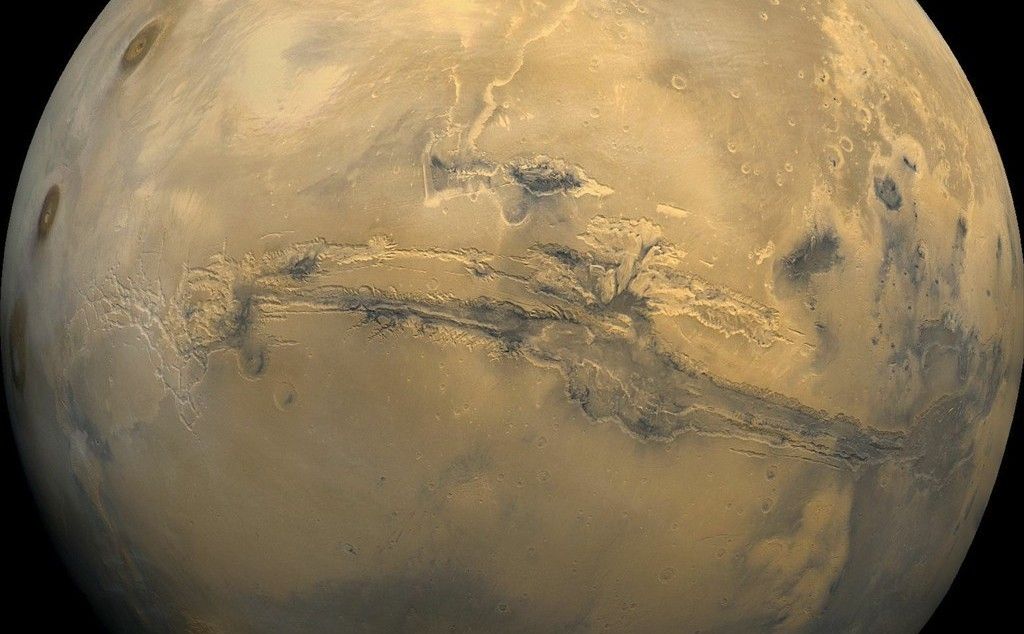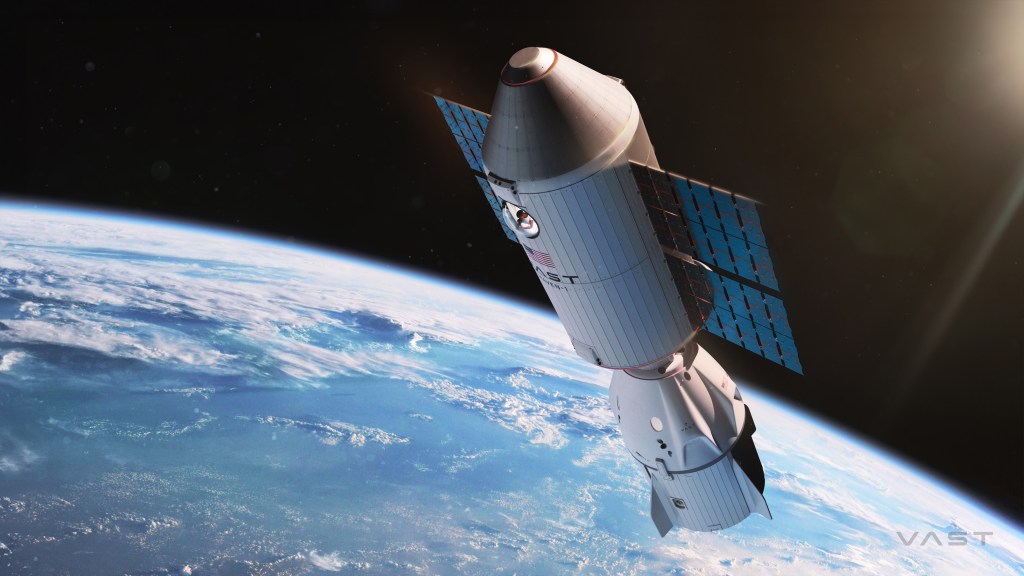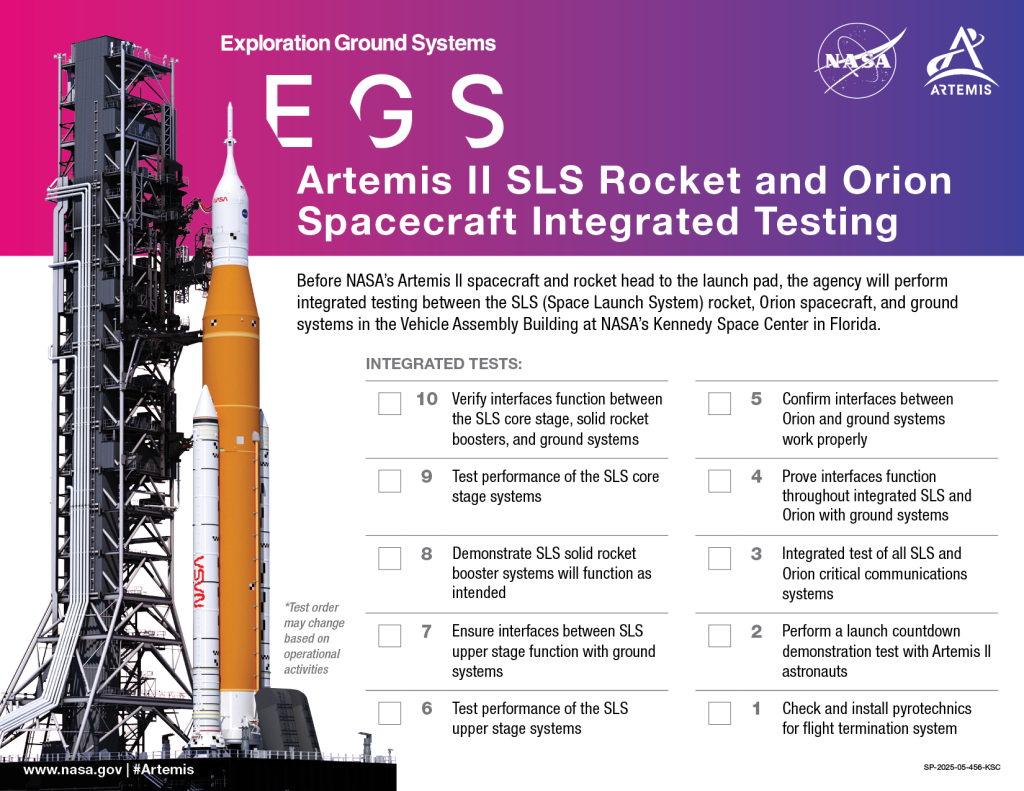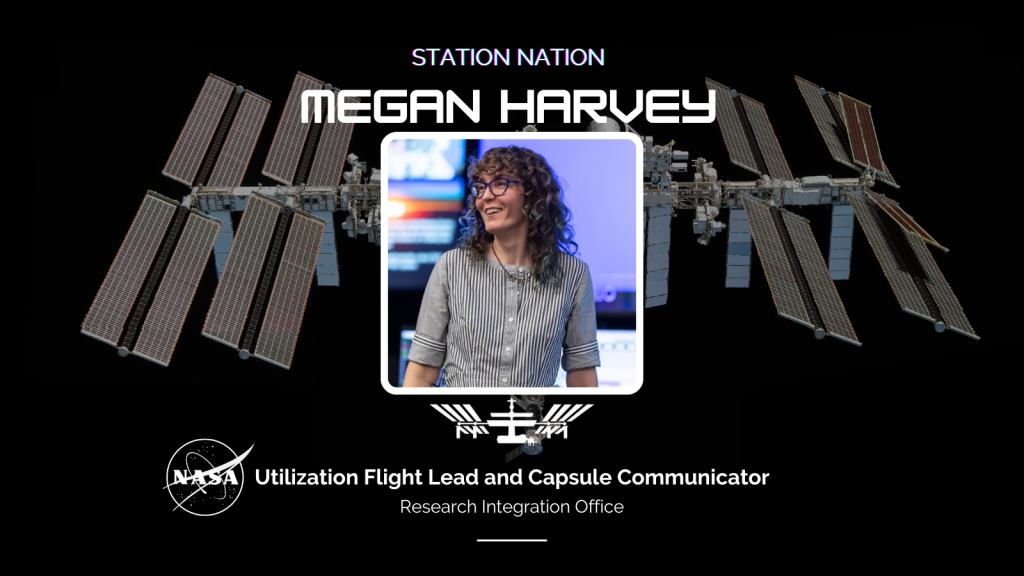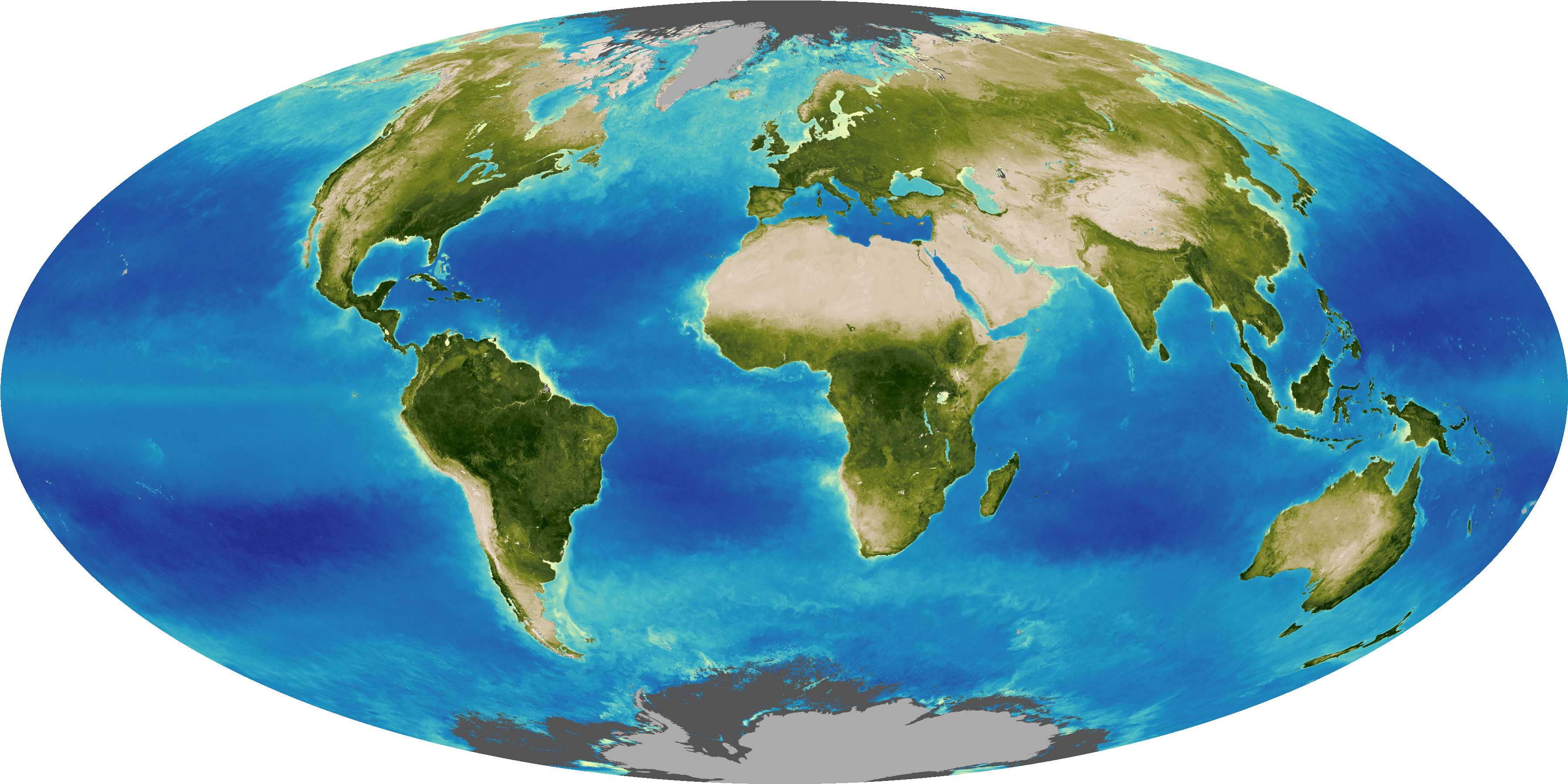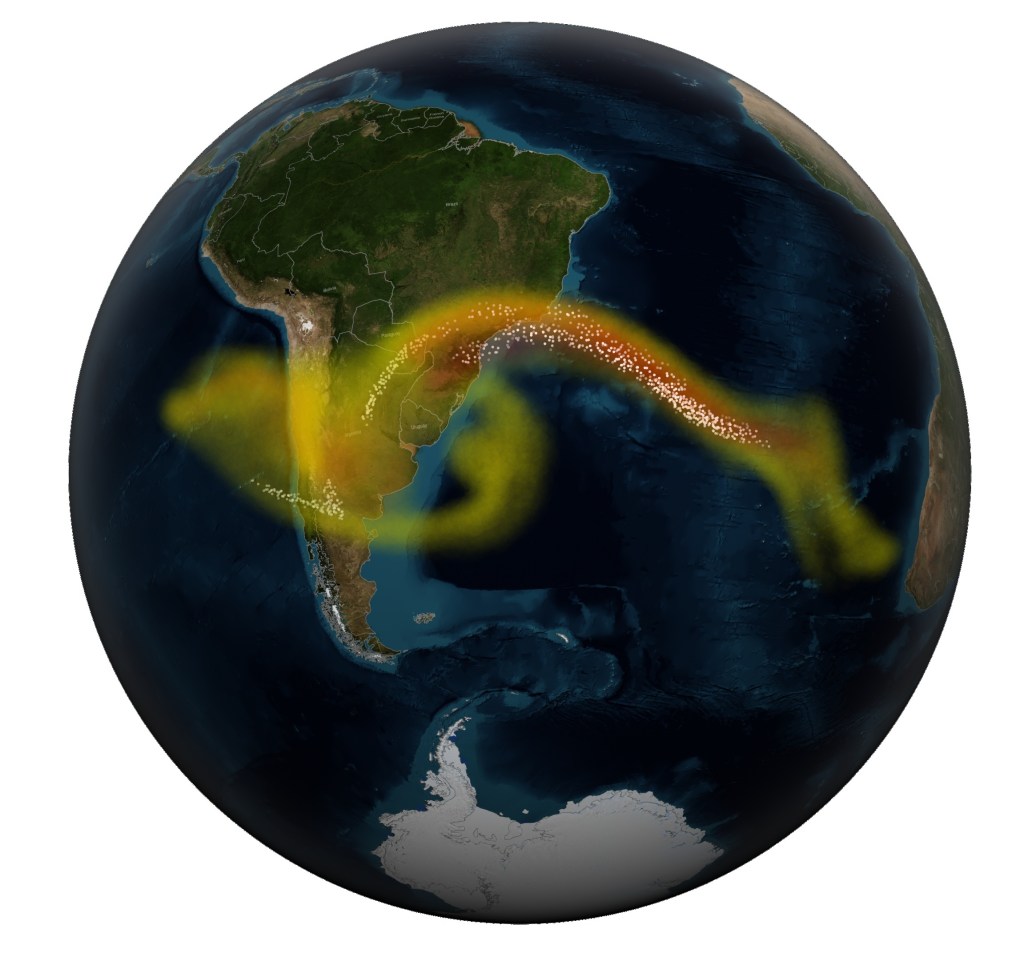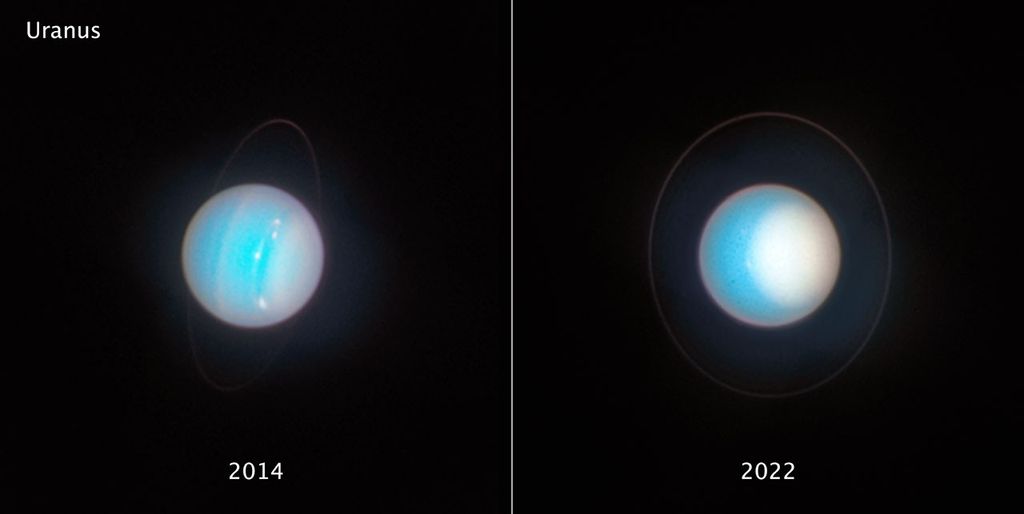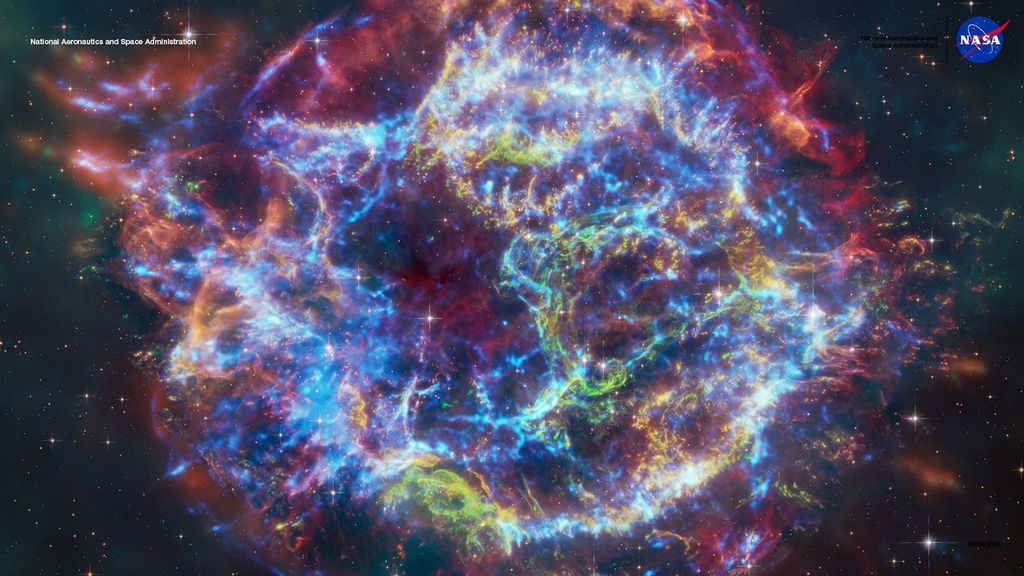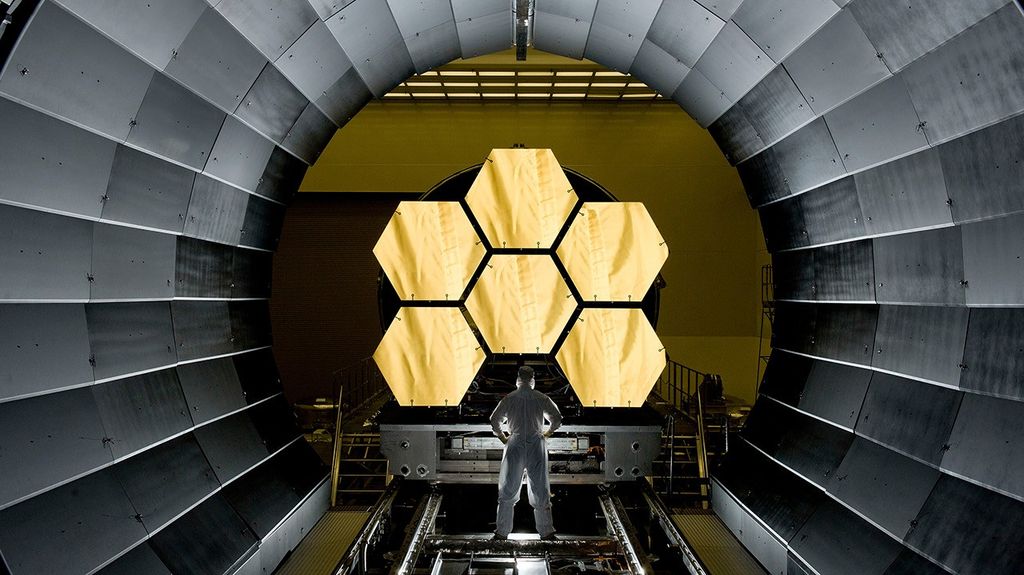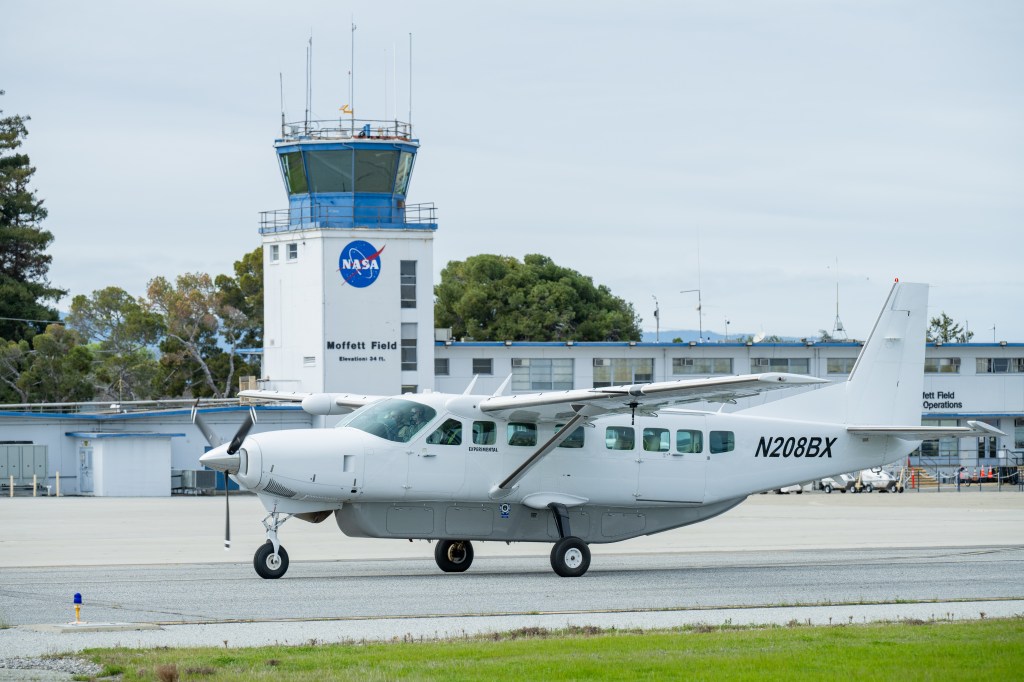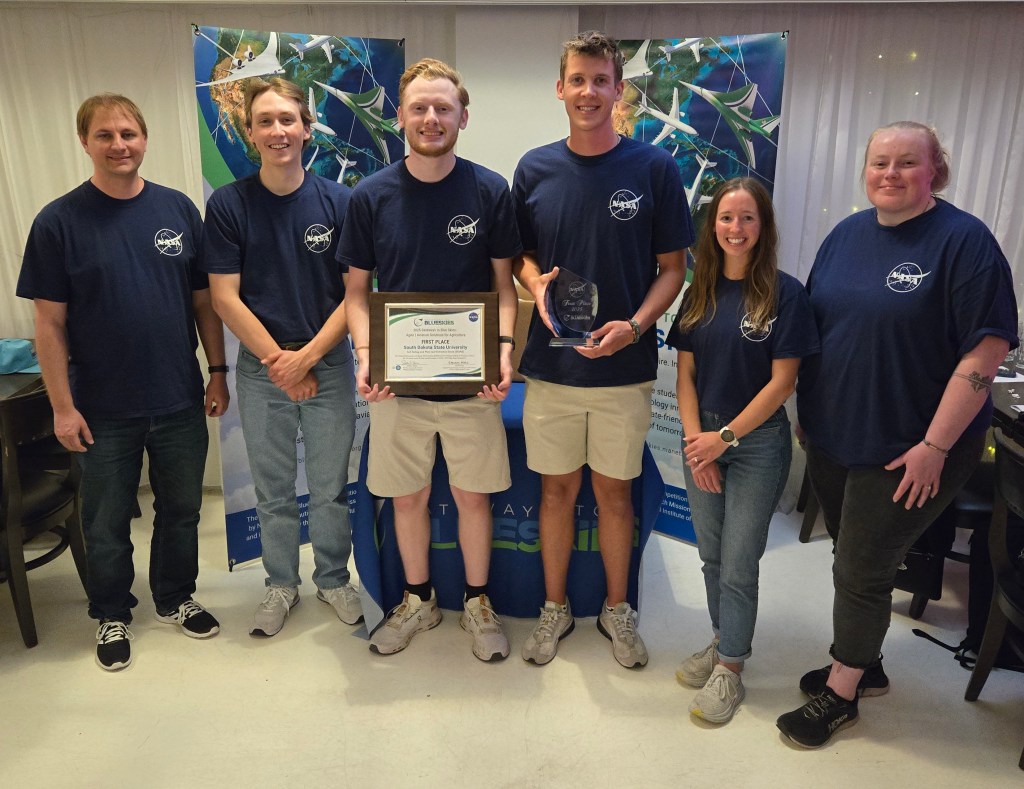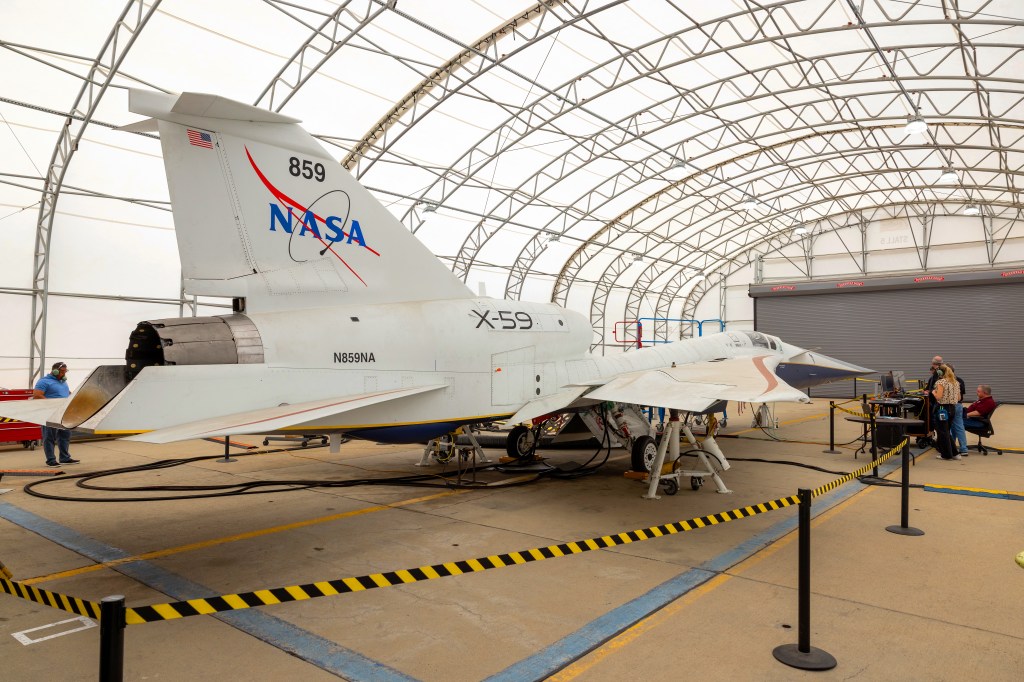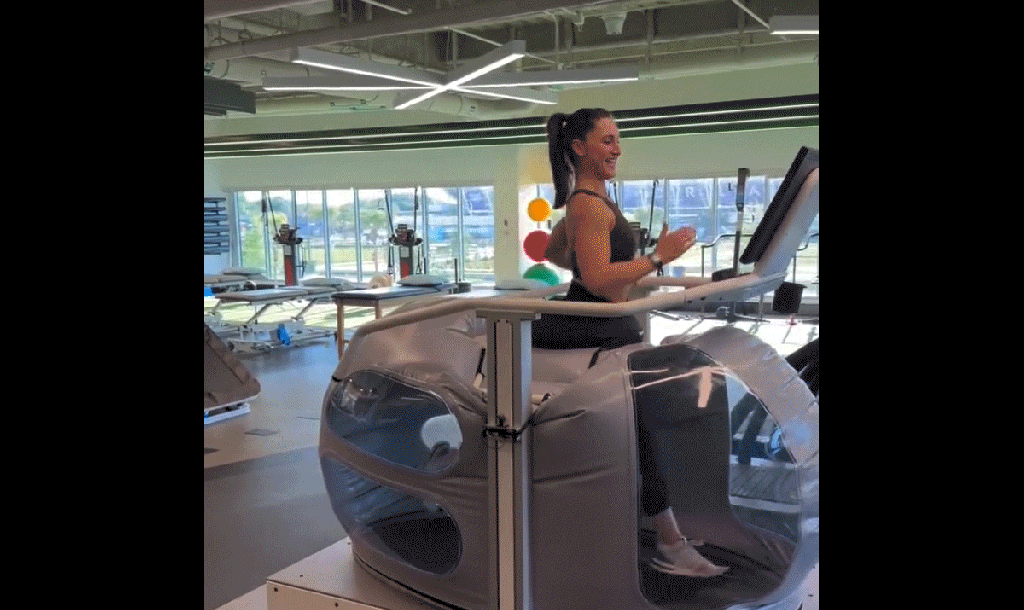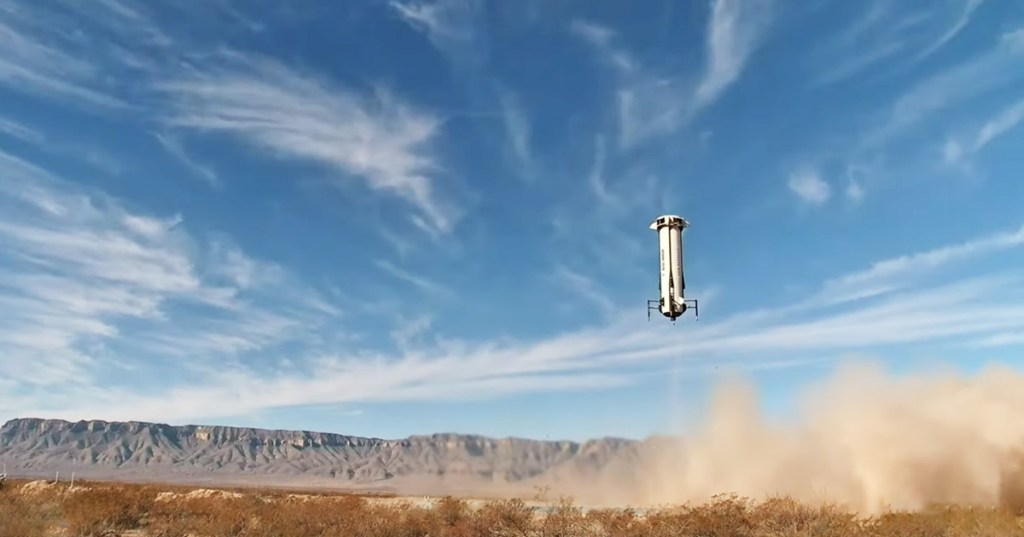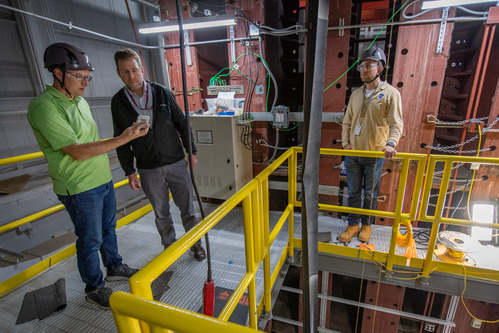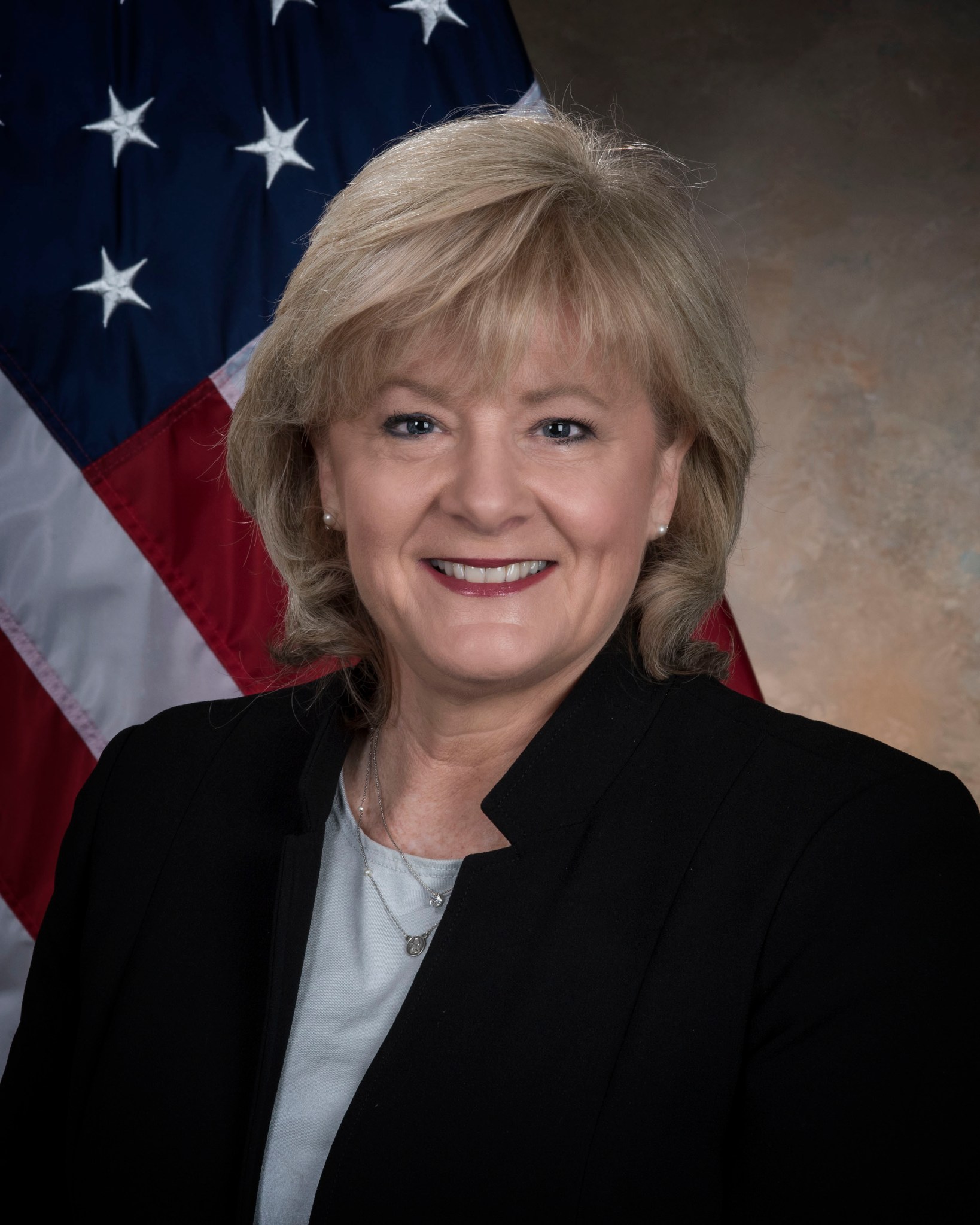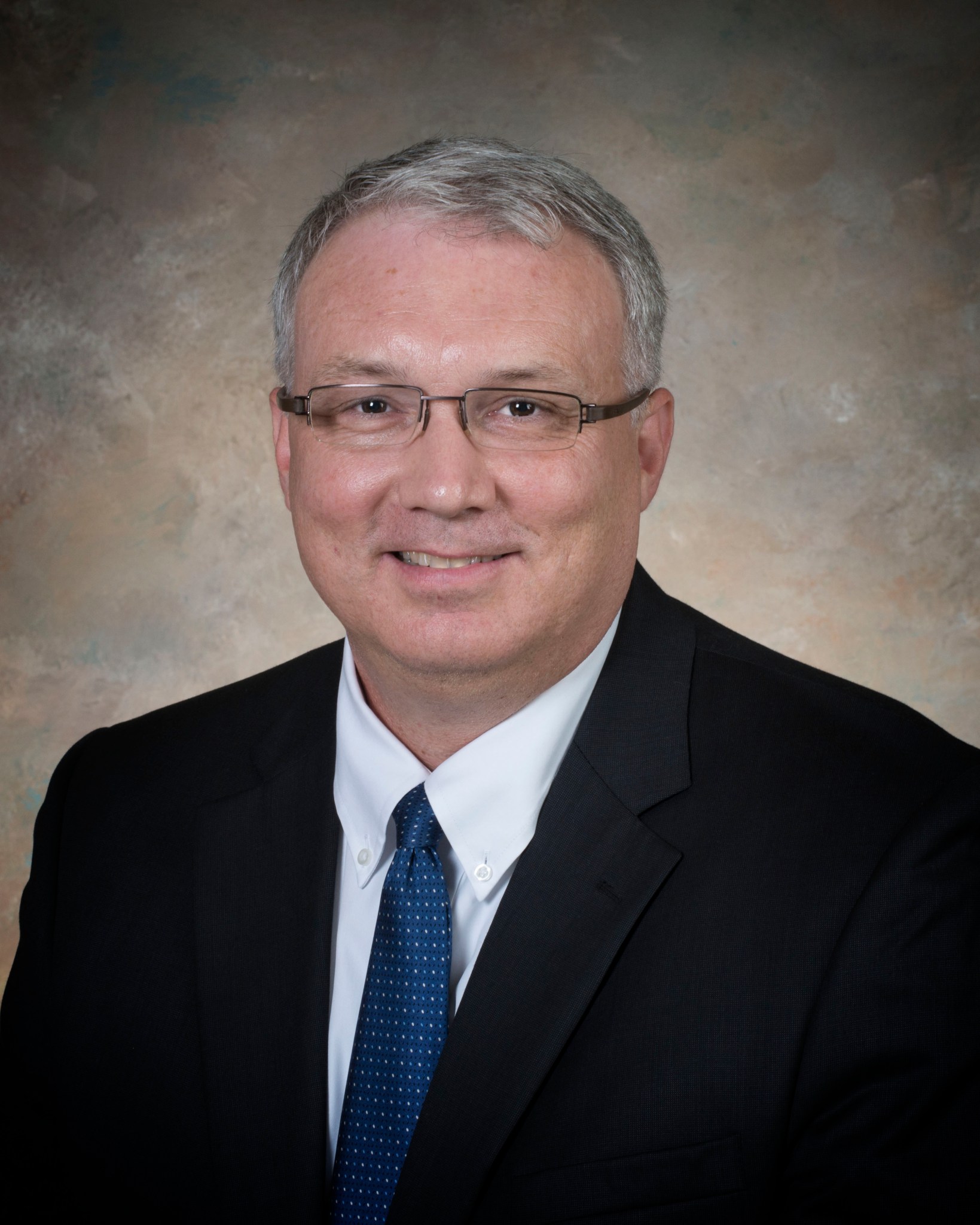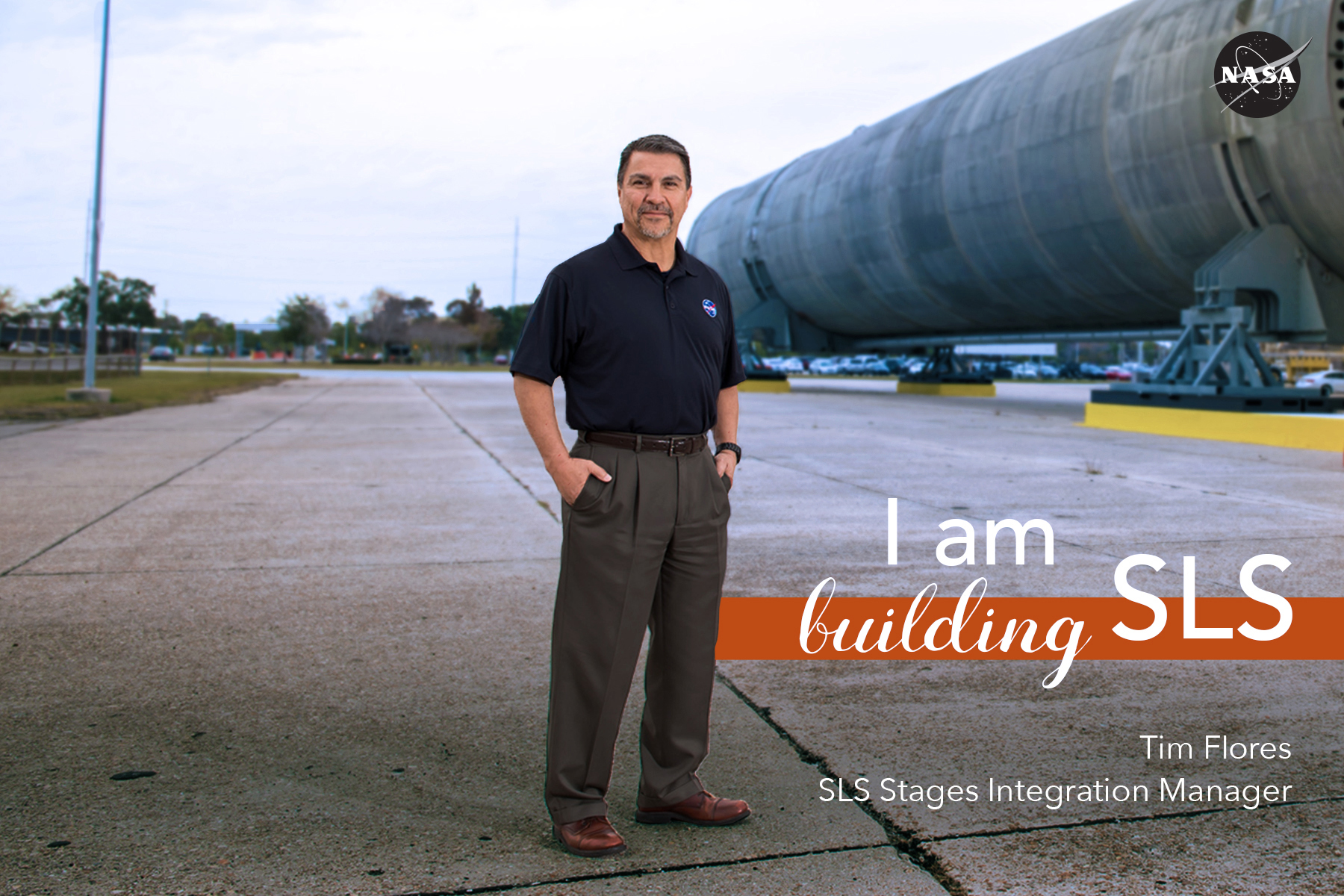In This Week’s Star
- NASA’s Barge Pegasus Delivers SLS Hardware to Marshall for Testing
- Message from the Deputy Director: Becoming an Authentic Leader through Coaching
- Marshall’s Daryl Woods Named International Space Station Cost Account Manager
- Essential to the Mission: Emily Adams
- I Am Building SLS: Tim Flores
- ‘Dream, Girl’ Director Encourages Marshall Team Members to Dream Big
- Marshall Associate Director Jonathan Pettus Talks about Marshall’s 2017 Accomplishments and Looks Ahead at Marshall Association Luncheon
- This Week in NASA History: Columbia Launches USMP-2 and OAST-2 – March 4, 1994
- InSight Mission Highlighted on ‘This Week @NASA’
- Obituaries
NASA’s Barge Pegasus Delivers SLS Hardware to Marshall for Testing
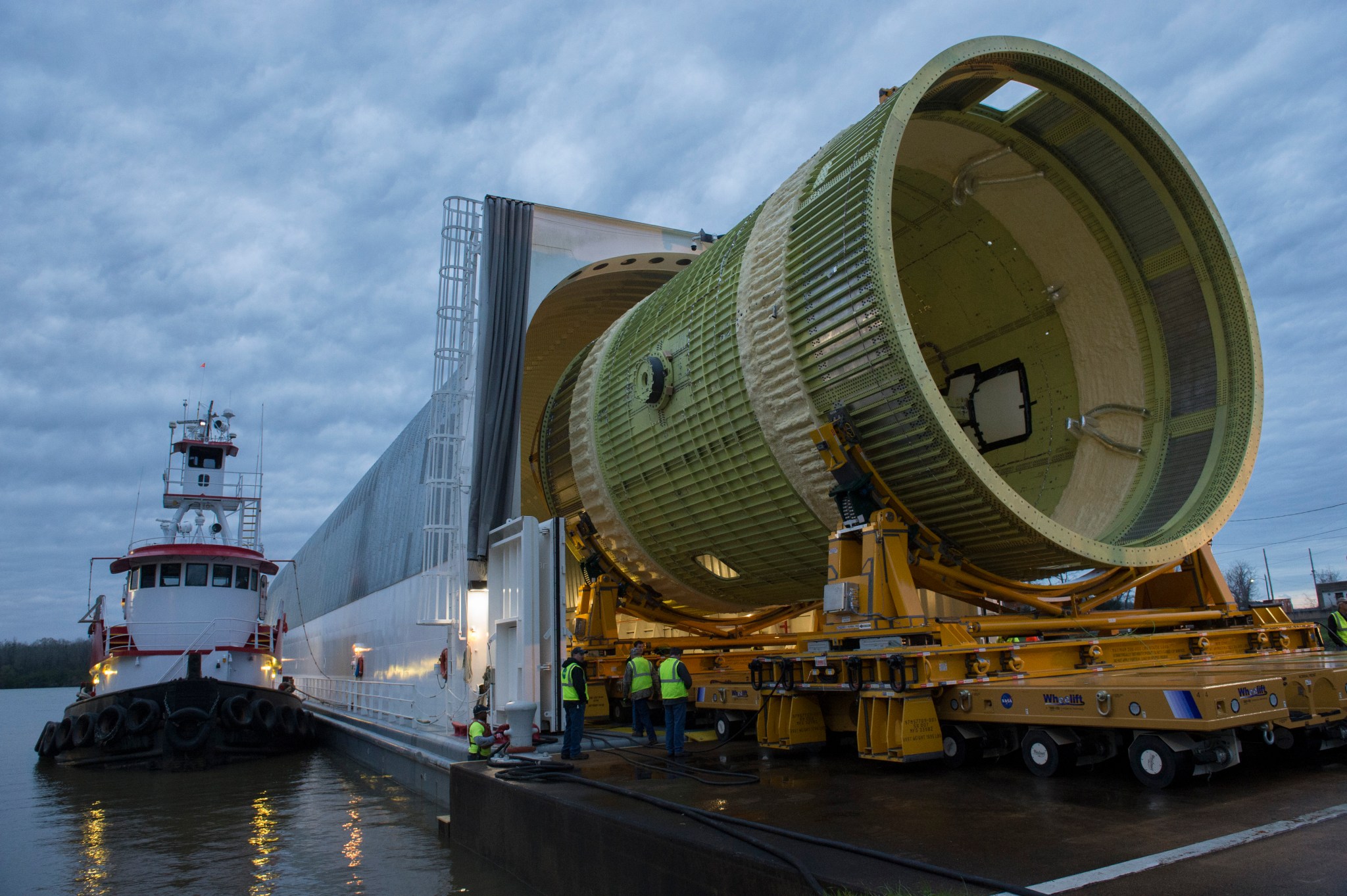
A structural test version of the intertank for NASA’s new deep-space rocket, the Space Launch System, arrives at NASA’s Marshall Space Flight Center March 4, aboard the barge Pegasus. The intertank is the second piece of structural hardware for the massive SLS core stage built at NASA’s Michoud Assembly Facility delivered to Marshall for testing. The structural test article will undergo critical testing as engineers push, pull and bend the hardware with millions of pounds of force to ensure it can withstand the forces of launch and ascent. The test hardware is structurally identical to the flight version of the intertank that will connect the core stage’s two colossal propellant tanks, serve as the upper-connection point for the two solid rocket boosters and house critical avionics and electronics. Pegasus, originally used during the Space Shuttle Program, has been redesigned and extended to accommodate the SLS rocket’s massive, 212-foot-long core stage — the backbone of the rocket. The 310-foot-long barge will ferry the flight core stage from Michoud to other NASA centers for tests and launch. (NASA/MSFC/Emmett Given)
Message from the Deputy Director: Becoming an Authentic Leader through Coaching
By Jody Singer
As a leader, paying it forward is one of the most important things I do. I believe preparing our future leaders through mentoring is the best kind of legacy. It’s why I’ve hosted quarterly mentoring events and spend time speaking to students who will someday be our future workforce. It’s great to share stories and learn from one another, but there’s another step we have to take — coaching.
Coaching is sharing tangible feedback that helps leaders develop their skills based on proven techniques that best align to their abilities. Even as deputy director, I rely on my team to give me feedback. I expect it. How can I become a better leader and guide my team if I don’t know what I need to work on or how I’m being perceived? Getting honest feedback is the next step after finding a mentor. It helps us learn and grow. It can be difficult to hear constructive criticism, but it’s like stretching a muscle: You’ll be stronger for it in the end.
Mentors can be found anywhere, at all levels of the organization. They can be younger, older, or a different level in the hierarchy. Everyone has something to teach you if you take the opportunity to listen. The only thing that matters is finding mentors that provide genuine feedback that help you develop your own authentic leadership style.
I always say there are three kinds of mentors. The on-the-job mentor teaches you what you need to do for your job. This is a ready-made mentor that you already know.
Sometimes they are sitting right next to you. The “next job” mentor helps you develop the skills for the next level of leadership — the “you” as a future leader. Look for people that you think are successful and people want to follow; watch them, learn from them. And the final level of mentoring is where you develop yourself and understand your strengths as well as your blind spots. Be self-aware, find your own strengths and weaknesses and develop your own secret sauce to being a leader.
Mentorship and coaching are tools for every employee, at all levels, no exceptions. We have to continuously learn and grow as leaders to adapt to changing work environments and exciting new challenges. It’s one thing to be inspired by someone’s story, but it’s another thing entirely to receive constructive feedback that can be absorbed and implemented in your daily life. Being open to feedback is a key indicator of future success. Using the feedback while maintaining authenticity will make you a leader people will want to follow.
If you’re looking for more opportunities for feedback, I encourage you to join the next mentoring event on March 15 at the Education Training Facility, located at the U.S. Space & Rocket Center, just past the Marriott Hotel, from 8 a.m.-noon, where you’ll have an opportunity to find a mentor, gain feedback and learn more about working in a multigenerational workforce. To register on ExplorNet, click here.
Marshall’s Daryl Woods Named International Space Station Cost Account Manager
Robert Daryl Woods has been appointed to the Senior Executive Service position of International Space Station Payload Operations cost account manager of the Human Exploration Development and Operations Office at NASA’s Marshall Space Flight Center.
The Senior Executive Service is the personnel system covering top managerial positions in federal agencies.
Woods will be responsible for ensuring integration of all space station support within the Center and the ISS program.
Since 2017, he was acting cost account manager for the office. Earlier this month, Woods oversaw the Payload Operations Integration Center team as it reached a record 109 hours of crew utilization onboard the space station in a single week.
Throughout his 17-year career at NASA, Woods has served in technical, managerial and leadership roles. He joined Marshall in 2000 as a vehicle integration engineer supporting the Reusable Solid Rocket Motor Project Office. From 2005 to 2007, he was deputy integration lead, technical resources manager, and Reusable Solid Rocket Motor integration team lead in the Reusable Solid Rocket Motor Project Office. From 2007 to 2008, he provided consultation to address integrated solid rocket propulsion systems and vehicle integration issues with respect to safety and cost as the supervisory lead for the Reusable Solid Rocket Booster Integration Office.
From 2008 to 2010, Woods was deputy manager, including acting manager, of the Ares Vehicle Integration Office where he provided technical decisions and consultation on planning, integration, and resolution of critical safety, cost and performance issues.
From 2010 to 2011, Woods was technical assistant and systems integration lead engineer to the chief engineer of the Flight Systems Development activity within the Office of the Chief Engineer. He led, coordinated and planned flight systems development projects to include program/project planning, budgeting, scheduling, systems engineering and integration, design, flight testing and overall evaluation of the flight systems activity.
Woods subsequently served on a brief detail as assistant program manager for the Space Launch System Program Office before assuming the position of deputy manager for the SLS Program Planning and Control Office in 2011 — a position he held until 2014. He directed all business and resource management activities required to meet the SLS program goals and objectives. Starting in 2014, Woods was technical assistant to the ISS Projects Office with responsibility for maintaining liaison with programs, center organizations, and stakeholders in support of NASA’s mission.
Prior to joining NASA, Woods served in the U.S. Air Force as a missile combat crew member, serving in multiple positions including crew commander and instructor, and as ballistic missile and satellite engineer and executive officer for the National Air Intelligence Center.
A native of Waddy, Kentucky, Woods received a bachelor’s degree in astronautical engineering from the U.S. Air Force Academy and a master’s degree in astronautical engineering from the Air Force Institute of Technology. He has received numerous honors and awards for his service to NASA, including the NASA Exceptional Achievement Medal.
Woods and his wife, Carla, reside in Madison. They have two children, Corey and Annabella.
Essential to the Mission: Emily Adams
By Jonathan Deal
Whether she’s delivering data to aid flood forecasting or promoting sustainable development through dissemination of satellite information, Emily Adams is making a difference everyday working on NASA’s SERVIR project, a joint venture between NASA and the U.S. Agency for International Development.
As SERVIR’s regional science coordination lead for Eastern and Southern Africa, Adams also serves as a research associate at the University of Alabama in Huntsville as part of a collaboration between NASA’s Marshall Space Flight Center and the university.
“I’ve always liked the idea of applied science and taking state-of-the-art technology to decision-makers and really making a difference,” said Adams. “A huge reason why I wanted to work with SERVIR was to help make a difference internationally. I love doing the science and bringing it to the people who really need it.”
Developed in 2004 by researchers at Marshall and implemented through NASA partnerships with leading regional organizations around the globe, SERVIR provides critical information and support services to help national, regional and local governments, forecasters, climatologists and other researchers track environmental changes, evaluate ecological threats and rapidly respond to and assess damage from natural disasters.
“Understanding our home planet is critical to NASA’s mission,” said Adams. “Our office works to take the science and bring that to people around the world who would benefit from that research. In that sense, we’re not only pushing the science forward, but we’re also creating a global user group of Earth-observation data and technology.”
Adams and her SERVIR counterparts rely on regional hubs to do consultation and needs assessments so they can solve issues using geospatial technologies — modern tools contributing to the geographic mapping and analysis of the Earth and human societies. It’s up to Adams and other regional leads to assist decision-makers with finding solutions to their problems.
“It’s people who really inspire me,” she said. “Not only working with our close-knit group of scientists here at Marshall, but also the international group of scientists that we work with across the globe. The SERVIR motto is ‘Bring Space to Village’, and that’s what we really try to do. It’s inspiring to see decision-makers able to use the services we help design in order to better the lives of the people on the ground.”
It’s not just from behind a computer monitor at UAH where Adams makes a difference — she travels to Africa several times a year to meet with SERVIR’s regional partners. In 2017, Adams was able to visit Ghana, Kenya and Malawi, and just recently returned from assisting the SERVIR hub in Tanzania.
“One of my most memorable experiences was the opportunity to go to Kenya to a stakeholder engagement workshop where we helped with frost monitoring and forecasting for small-scale tea farmers,” said Adams. “We brought together research organizations, universities and small farmers for a couple of days to determine what their needs were and how we could address those needs. It was inspiring to be a part of that workshop and hear from actual decision-makers and users to hear what they needed from NASA’s tools and technology.”
Deal, an ASRC Federal/Analytical Services employee and the Marshall Star editor, supports the Office of Strategic Analysis & Communications.
I Am Building SLS: Tim Flores
The ability of NASA’s Space Launch System to carry crews and large cargos will take the world places we’ve never been before. But before it can do that, the pieces of the rocket have to be built, assembled and tested. Meet Tim Flores, integration manager for stages in the SLS Program Office, who is working to make that happen.
This is a monumental event. Like Apollo, it’s not just a NASA or an American achievement. It’s a humankind kind of achievement. That’s what I think about when I am managing a team to move a giant piece of the Space Launch System for the first time using mostly brand new equipment.
This rocket’s ability to carry crews and large cargos will take the world places we’ve never been before. But before it can do that, the pieces of the rocket have to be built, assembled and tested, and I help make that happen. As the integration manager for the SLS stages, I oversee all testing for the 212-foot-tall core stage, the largest rocket stage ever built. It includes moving the core stage for the final test before launch, the green-run test at Stennis Space Center when all four RS-25 engines are fired at once for the full duration of a launch.
Before a rocket can soar to space, it is moved around on Earth, and we had to figure out how to do this. Even the Pegasus barge — which moved the space shuttle’s external tank from NASA’s Michoud Assembly Facility over to Kennedy Space Center — wasn’t strong enough to move the SLS core stage, so we made it longer and stronger. Everything we have that’s associated with moving and transporting the rocket is all special hardware. We can’t go buy this stuff off the shelf. To practice moving such large equipment, we developed a core stage pathfinder that replicates its size and weight. The pathfinder will be used to reduce risk by demonstrating our transportation and ground support equipment processes and fit check our interfaces in facilities and the barge. In addition, four large structural sections of the core stage have to be tested to ensure they are designed to survive the stress and strain of launch. My team moves the test articles by land and water to NASA’s Marshall Space Flight Center for the tests. To conduct the tests, we built test stands that changed the skyline of Huntsville.
There are many deadlines that have to be met to get hardware moved and tested on time, so one challenge for me is managing work and family life. I love spending time with my son. We go camping, fishing and spend time outside away from computer screens.
Being part of building SLS and making space missions successful is an honor and a great legacy to hand down to my son.
‘Dream, Girl’ Director Encourages Marshall Team Members to Dream Big
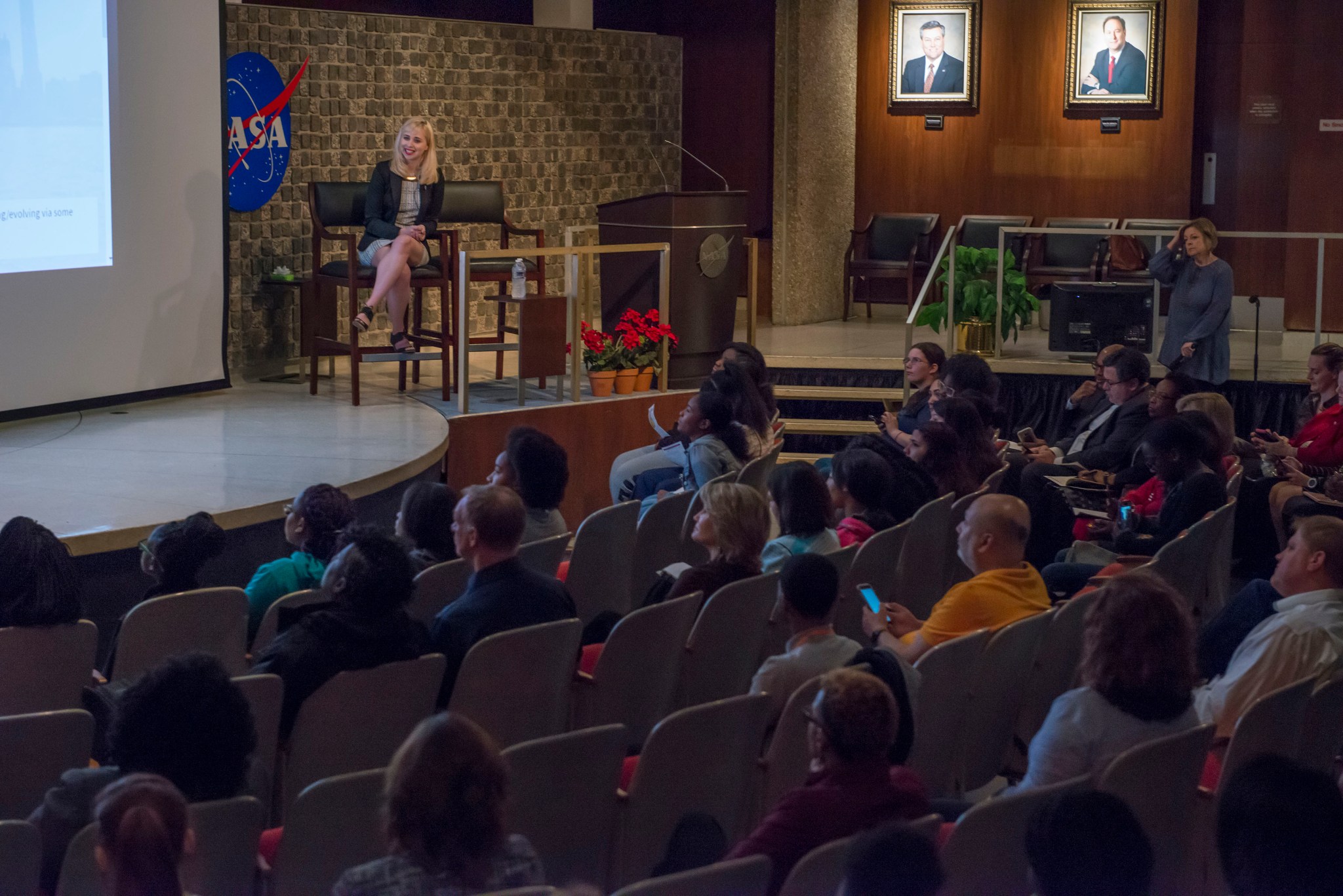
NASA’s Marshall Space Flight Center celebrated Women’s History Month March 1 with a series of activities, including the screening of the documentary film, “Dream, Girl.” The film’s director, Erin Bagwell, answered questions after the viewing and spoke about the women in the film who inspire others to dream big. Marshall team members then participated in breakout sessions, sharing ideas and personal stories to learn more about the diversity Marshall offers and the vast advantages of different viewpoints. The event was sponsored by Marshall’s Office of Human Capital, the Chief Technologist Office and the Office of Diversity and Equal Opportunity’s Federal Women’s Program.
Marshall Associate Director Jonathan Pettus Talks about Marshall’s 2017 Accomplishments and Looks Ahead at Marshall Association Luncheon

Marshall Associate Director Jonathan Pettus, standing at left, presents a “Marshall Update: Toward a New Era of Space Exploration and Science,” at the Marshall Association’s first luncheon of 2018. Pettus highlighted accomplishments of the Marshall team in both science and engineering fields, and provided a preview of the work ahead at Marshall in 2018 and beyond. The Marshall Association works to build the exchange of innovative and stimulating ideas within the Marshall community. The self-governing organization sponsors several activities throughout the year and sponsors a speaker program addressing topics of interest to Marshall team members. The Marshall Association is actively seeking new members and aims to achieve its 2018 goal of providing five undergraduate scholarships — one more than last year. Current members will be set up in various buildings around Marshall to talk with the workforce about the Marshall Association. On March 19, NASA Administrator Robert Lightfoot will be the guest speaker at the monthly luncheon. To learn more about the organization, visit the Marshall Association’s ExplorNet page. (NASA/MSFC/Fred Deaton)
This Week in NASA History: Columbia Launches USMP-2 and OAST-2 – March 4, 1994

This week in 1994, the space shuttle Columbia launched on mission STS-62 from NASA’s Kennedy Space Center. Primary payloads consisted of the U.S. Microgravity Payload-2 — USMP-2 — and the Office of Aeronautics and Space Technology-2 payload, better known as OAST-2. USMP-2 was a package of microgravity experiments for Spacelab, a reusable laboratory that flew in the shuttle cargo bay, and included five experiments investigating materials processing and crystal growth in microgravity. OAST-2 featured six experiments focusing on space technology and spaceflight. NASA’s Marshall Space Flight Center developed and managed Spacelab and USMP-2, while Marshall’s Spacelab Mission Operations Control Center commanded and monitored the instruments and analyzed the data. Today, the Payload Operations Integration Center at Marshall serves as “science central” for the International Space Station, working 24/7, 365 days a year in support of the orbiting laboratory’s scientific experiments. The NASA History Program is responsible for generating, disseminating and preserving the agency’s remarkable history and providing a comprehensive understanding of the institutional, cultural, social, political, economic, technological and scientific aspects of NASA’s activities in aeronautics and space. For more pictures like this one and to connect to NASA’s history, visit the Marshall History Program’s webpage. (NASA)
InSight Mission Highlighted on ‘This Week @NASA’
The delivery of the InSight spacecraft to Vandenberg Air Force Base is featured in “This Week @NASA,” a weekly video program broadcast nationwide on NASA-TV and posted online.
The InSight spacecraft was shipped from Lockheed Martin in Denver to California’s Vandenberg Air Force Base to prepare for its launch to Mars in May. InSight will be the first mission to study the activity deep beneath the Martian surface.
NASA’s Marshall Space Flight Center manages the InSight mission for NASA.
View this and previous episodes at “This Week @NASA” on NASA’s YouTube page.
Obituaries
William R. Humphries, 81, of Huntsville, died Feb. 26. He retired from the Marshall Center in 1999 as the Structures and Dynamics Lab director. He is survived by his wife, Joyce Humphries.

